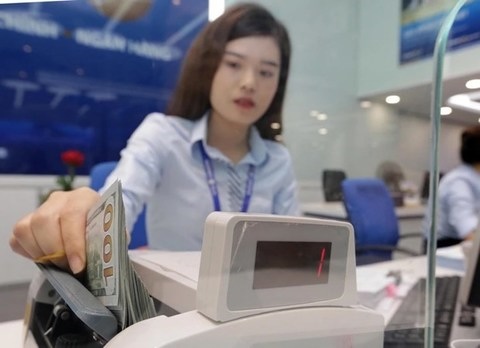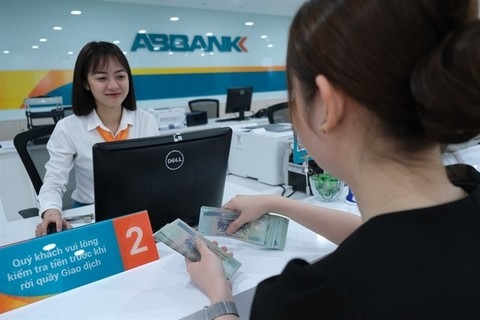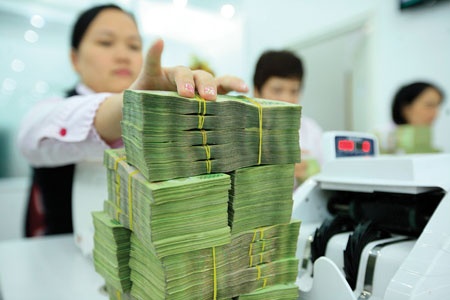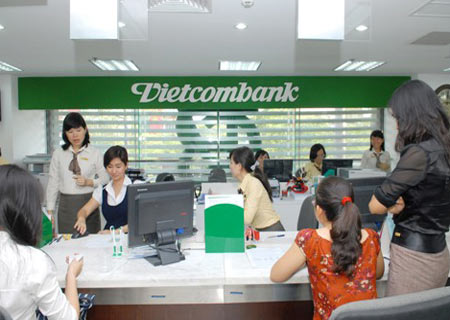Analysis: Basel II bank performances
Analysis: Basel II bank performances
Updated financial reports coming from nine out of 10 banks, consisting of Vietcombank, Vietinbank, BIDV, VIB, ACB, Techcombank, VPBank, MB, and Sacombank (leaving Maritime Bank out of the list as its latest reports were dated 2015) that are to implement Basel II requirements by 2018, showed that the percentage of income generated by banks arose chiefly from credit activities.
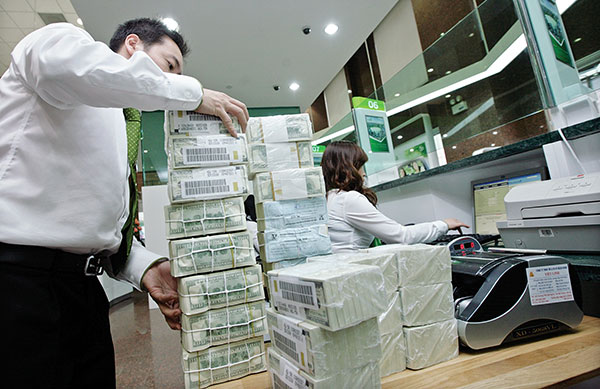
Average net interest income over average total income of the group was thus reported at over 80 per cent.
VPBank, for instance, revealed its net interest income as of the end of September at over VND1 trillion ($45.45 million), surpassing numerous other banks. Such results were said to be attributable to a number of finance companies owned by the lender, who somehow managed to secure leading market positions in the consumer finance field.
Other banks, meanwhile, had their share of income increasing from other activities. Vietcombank, in its third quarter report, claimed a VND1.85 trillion ($84.09 million) and VND1.939 trillion ($88.13 million) in interest income from its FX services and recovering debts, which were once made provisions for earlier on. The lender’s ratio of net interest income over total income was calculated at 74.6 per cent, the lowest ratio in the third quarter of 2016 within the group.
Sacombank and Techcombank were the two highlights of the commercial bank group as both had the lowest net interest income over total income ratio. These two lenders recorded swelling incomes from services rather than interest.
For instance, Sacombank’s income of VND500 billion ($22.72 million) as of the end of September came out of its FX services. Techcombank, meanwhile, secured over VND1 trillion ($45.45 million) from its non-credit line activities, of which VND193 billion ($8.77 million) was collected debts recovery and the same amount from insurance activities.
At a closer inspection of the financial results of the 10 lenders, VPBank holds the highest interest margin of 8 per cent on average. This figure came straight from its consumer finance line, which was said to be a distinguishing strategy within the group.
Taking VPBank’s success, other lenders like MB and its Japanese partner are finding ways to penetrate the consumer finance market.
VIB, Techcombank, and MB were the commercial banks whose net interest income over outstanding debts was rather high at 4.5-4.9 per cent. State-owned commercial banks, on the other hand, had the same ratio recorded at approximately 3.3 per cent.
Borrowers, based on such ratios, often think that interest rates at state-owned commercial banks are lower than at commercial ones. In fact, this depends on the lending structure of state-owned commercial banks that factors in the percentage of dollar-denominated loans, prioritised projects or good credit history of borrowers, which can often enjoy a better interest rate.
Sacombank’s net interest income over outstanding debts, however, posted at an average of 1.95 per cent, a rather risky number that can ensure the lender’s safety should its credit activities are core. Sacombank’s incomes, in reality, which arrive from its FX trading and activities, were able to ensure a return for the lender.
Provisions, bad debts and unpublished figures
Out of the nine banks mentioned, only Vietcombank, Techcombank, VPBank, and VIB published their outstanding debts after making provisions for bad debts. Others, however, were related to Vietnam Asset Management Company (VAMC).
Vietcombank, accordingly, was rather clean, as it managed to buy out all of its non-performing loans sold to VAMC earlier on. The lender, as such, would not have to think about making provisions for its debts sold to the asset management company.
For the others, having to allocate billions of dongs worth of provisions will continue being a burden. Should their income be sufficient to make up for these provisions, financial indicators for the following years would surely be affected.
State-owned commercial BIDV had possibly the biggest bad debt provision of VND9 trillion ($409.09 million). The lender also experienced the highest bad debts ratio of 1.96 per cent, compared to its peers in the state-owned bank group.
VPBank, meanwhile, was the lender that made the largest provision for bad debts among commercial lenders, according to their 9-month financial report. At the end of September 2016, VPBank’s bad debts ratio was 3 per cent, arising chiefly from its consumer finance loans. The lender’s 8 per cent interest margin, nevertheless, was able to bring profit.
It is worthwhile to note that most of the 10 banks implementing Basel II had their financial reporting in line with the IFRS requirements, with the exception of VPBank. Should they apply these requirements in a more stringent manner, debts that have been left out of their financial statements (sold to VAMC) would likely be recalculated and their bad debts ratio would possibly change.
Challenges for growth
According to data collected from the nine banks’ financial report, Techcombank seemed to lead the pack, making VND3.86 for every VND1 paid to employees. VPBank, Vietcombank, and MB followed with VND2.83, VND2.74, and VND2.74, respectively.
Sacombank arrived at the bottom with merely VND0.53 in profit for every VND1 paid to its employees. This could be explained by it having the smallest interest margin recorded within the group.
Employee expenses at these lenders in the first nine months of 2016 accounted for 50-55 per cent of the total expenses. Cutting employee costs seemed to be the hardest quest for all banks at this stage. Some have managed to improve their information technology system to reduce human resources costs and enhance labour capacity. Yet it is still too early to assess the efficiency of the IT system over human resources.
The Vietnamese banking sector may well be stuck at finding the right path for its growth. Interest rate margins may not be broadened over time as the current 3.3 per cent a year at state-owned commercial banks and 4.5 per cent a year at commercial banks are relatively high. Promoting lending will thus be the target for 2017.
Shifting to consumer finance as VPBank has been pursuing to improve its net interest margin could be a probable approach that many banks have taken into account. Nevertheless, such a segment comes with high risk, thus requiring a better risk management tool to control bad debts.
Maximising returns through services and other activities has not proven effective, as the percentage of returns from these segments over total income has not improved over the years. Local banks must, therefore, come up with specific strategies to boost income from these segments on the back of the ever-growing competition in the banking industry.
Controlling credit quality is also another aspect that banks ought to pay extra attention to in 2017. As bad debts ratio has been brought low, maintaining it would not be easy nor would cutting it down any lower.


